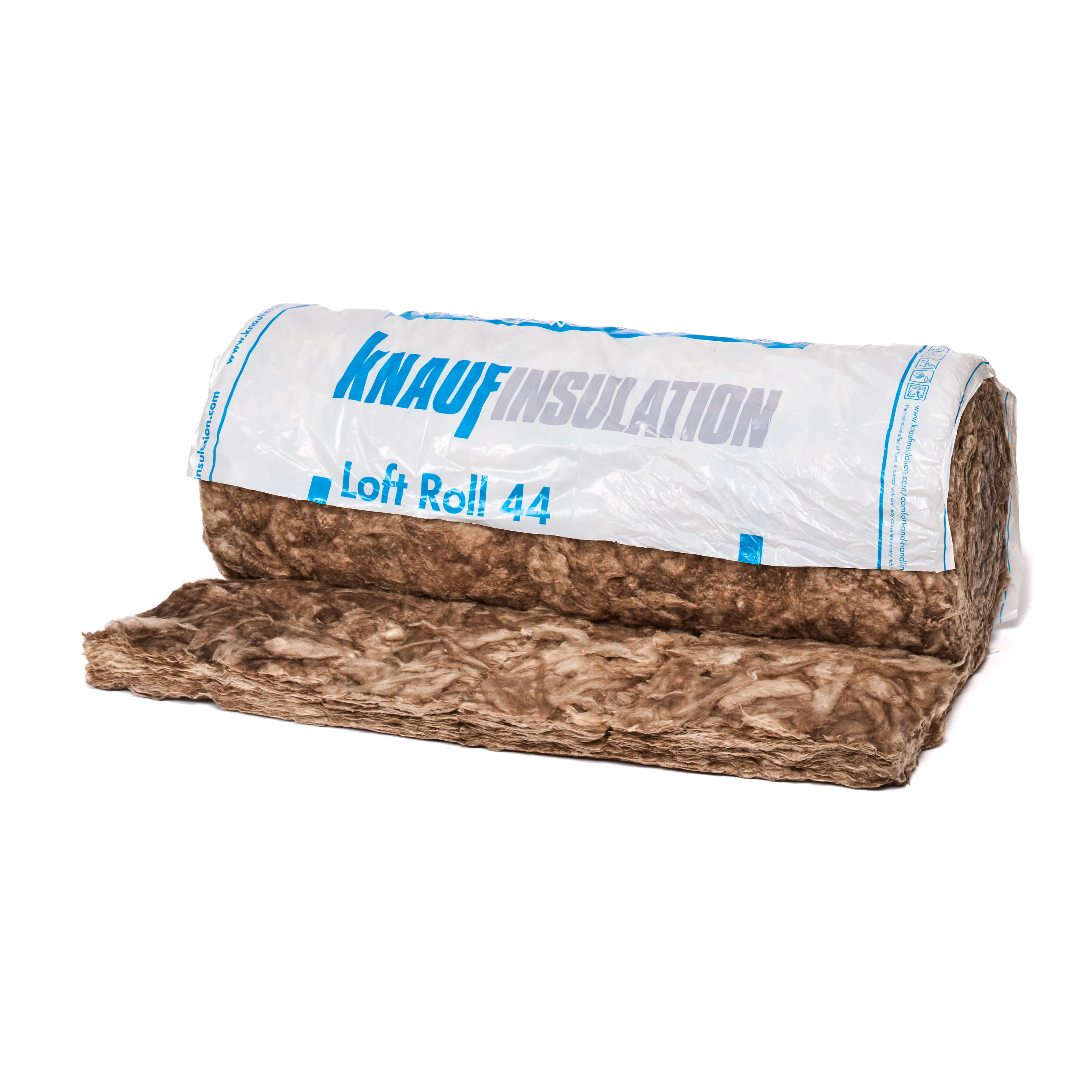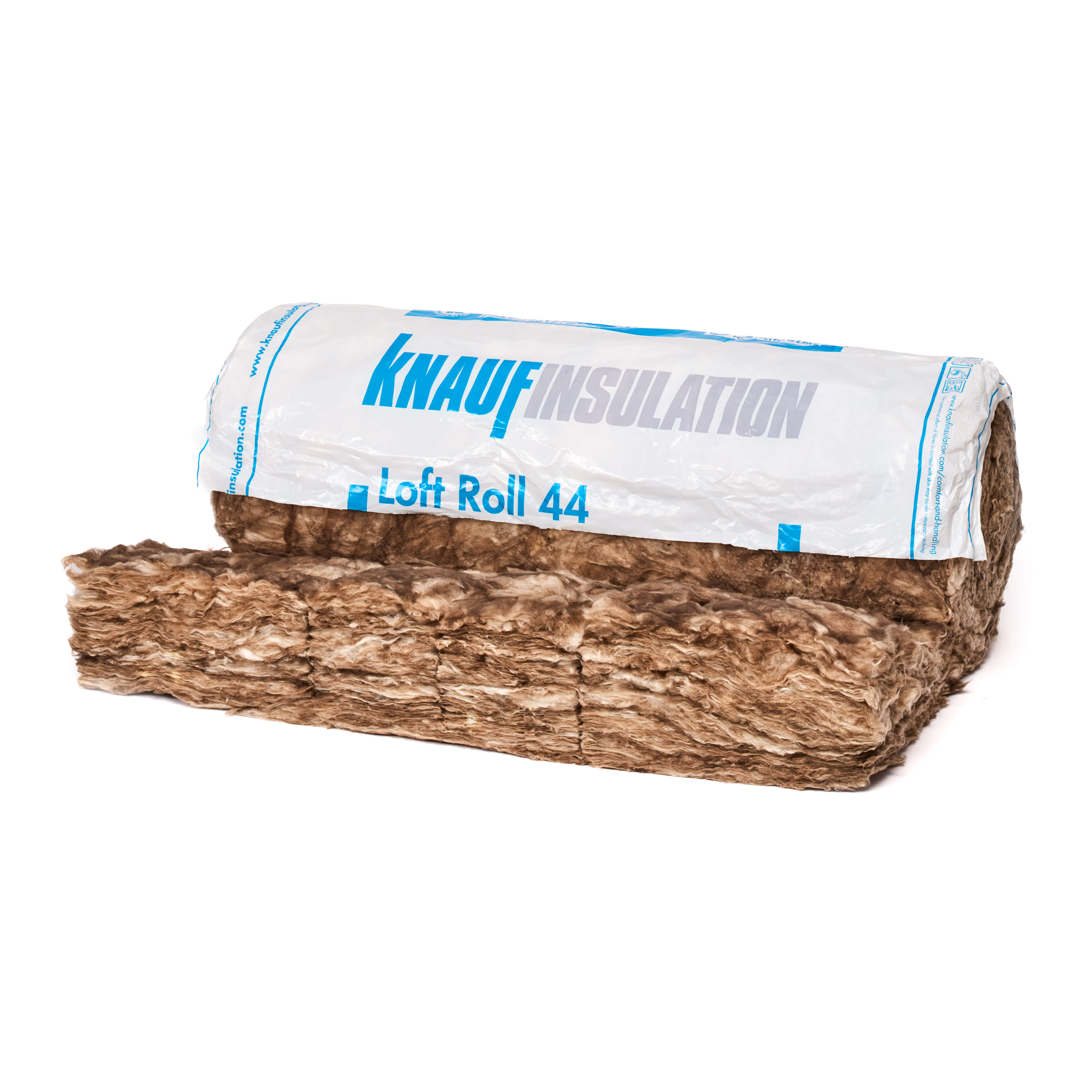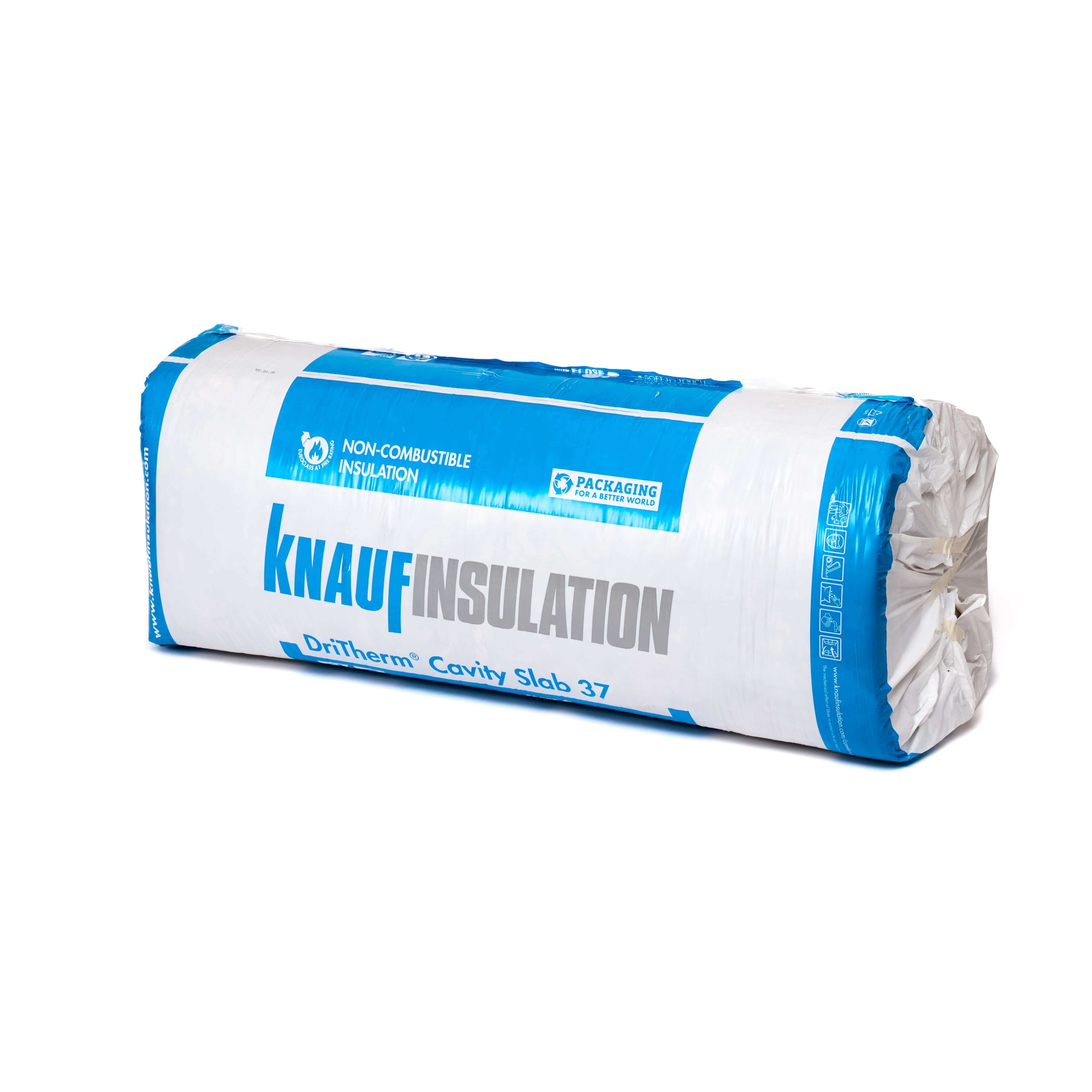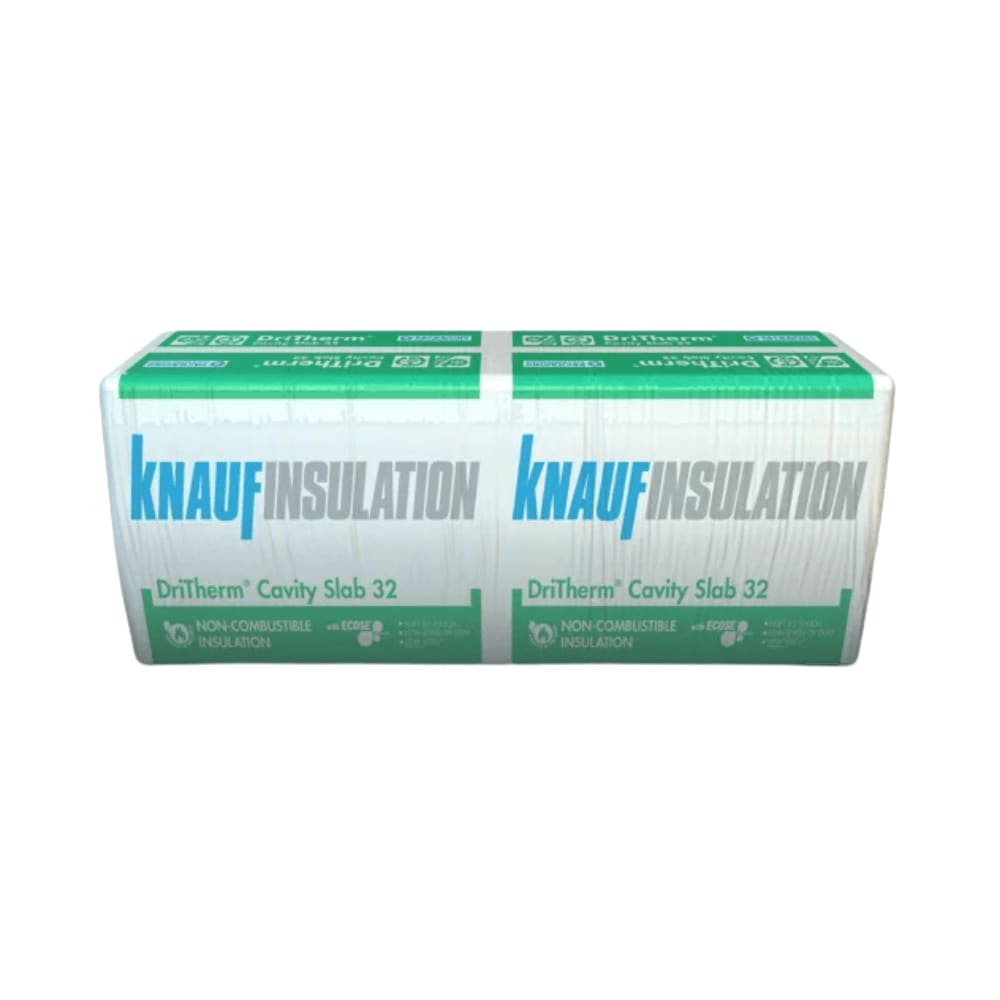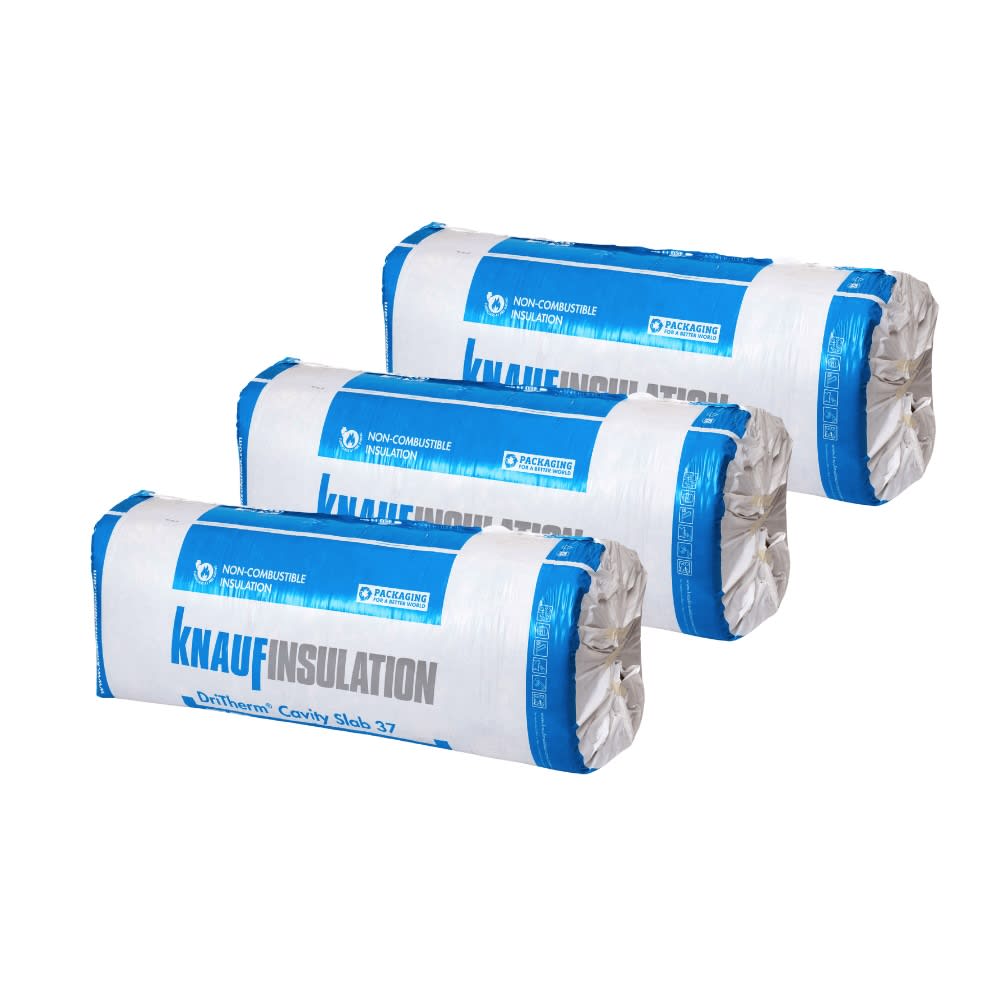Fibreglass Insulation
(38 Products)Fibreglass insulation, also known as glasswool, is formed by heating glass (often recycled) until it melts, then spinning it into very fine strands. These fibres are collected and formed into mats or rolls that can be placed between studs, joists, or rafters. It slows heat transfer by trapping air within its structure, and its non-combustible nature means it also contributes to fire protection in both residential and commercial builds.
What Is Fibreglass Insulation?
Fibreglass insulation, also known as glass wool insulation (or glass fibre insulation), is as the name would suggest, made up of recycled glass fibres. Layers and layers of glass mesh are bonded together; the resulting product of which features thousands of small pockets of air that inhibit warm air from escaping.
Seeing as glass is a poor conductor of heat, glass wool insulation is the perfect solution for keeping your home cool in the summer and balmy in the winter.
Fibreglass wool insulation comes in rolls and slabs or batts. Fibreglass batts – which can also be referred to as slabs – are large, compact insulation pieces that are designed to fit between joists, rafters, and studs. Rolls contain much more material and can be simply rolled out into joists and other spaces, such as pitched roofs at ceiling level.
Fibreglass Insulation Acoustic Rolls
Fibreglass insulation acoustic rolls are renowned for their excellent acoustic performance; a byproduct of fibreglass's air-pocketed make-up.
Acoustic insulation is a popular choice for people who want to create calm, relaxing spaces inside their homes; specifically bedrooms and offices.
Fibreglass insulation acoustic rolls can also reduce the amount of sound that your neighbours hear and can reduce noise bleeding into other rooms from recording studios and music practice rooms.
Fibreglass Insulation Loft Rolls
Fibreglass insulation loft rolls are loose fill and designed to be installed between the floor joists or rafters in loft spaces.
They come in Combi-Cut form, featuring perforations at 570mm and 380mm centres, which allows them to be cut easily to fit in between joist and rafter spacings.
Knauf Fibreglass loft insulation is a brilliant thermal insulation solution for a loft and comes in thicknesses of 100mm, 150mm, 170mm and 200mm.
While they don't quite have the thermal efficiency of a PIR insulation board (loft roll has a 0.044 W/mK thermal conductivity value vs PIR with just 0.022 W/mK), they are relatively cheap and easy to install.
Fibreglass Insulation Cavity Slabs
Cavity walls are comprised of two masonry walls with space in between (the cavity). Homeowners lose a mammoth 35% of the heat in their homes through this particular stubborn space.
Knauf Insulation is one of the most well-known manufacturers of fibreglass mineral wool cavity slabs (also known as fiberglass batts), with their Knauf DriTherm range, you can pack out space and trap heat that travels through.
Frequently Asked Fibreglass Insulation Questions
Why Is Fibreglass a Good Insulator?
Fibreglass insulation is an excellent insulator. Glass fibre insulation typically has a thermal value between 0.032 W/mK and 0.044 W/mK. It owes its excellent thermal properties to the materials and manufacturing process. Fibreglass wool insulation contains layers and layers of materials that are poor conductors of heat.
Is Glass Wool Insulation Fireproof?
In terms of thermal and acoustic insulation, glass mineral wool meets ever-more testing demands and regulations easily. In terms of fire protection, glass mineral wool products have been given a Reaction to Fire A1 (non-combustible) when tested to BS EN 13501-1 – the highest possible rating.
All the products in the Knauf DriTherm range have a Euroclass rating of A1, which means that they are non-combustible and fire-resistant. The Euroclass rating was created to standardise the classification of insulation products across Europe. It is very reliable. Insulation materials undergo up to five tests to assess whether or not they are given an A1 (non-combustible) or F (combustible) rating.
Is Glass Wool Insulation Waterproof?
Unfortunately, glass wool insulation is not waterproof. Insulation boards are comprised of a core insulation material that is faced with two protective layers of aluminium foil. In contrast, fibreglass batts and rolls are exposed. There is no protective layer between water and the insulating material.
Fibreglass insulation works best in environments that are protected from moisture. If fibreglass or glass wool gets wet, moisture will saturate the material and make it ineffective. You might be able to save the roll if you can dry it out and remove the moisture, but fibreglass insulation should be kept dry if at all possible.
How to Cut Fibreglass Insulation?
Fibreglass insulation is lightweight and one of the easiest insulation materials (compared to other building materials) to cut and manipulate into different shapes. Some fibreglass insulation rolls are pre-perforated, which means that you can get the size you need without making any cuts.
If you do need to cut your glass wool insulation, the easiest way to go about it is with a sharp utility knife. We recommend marking the rolls or batts with your measurements before cutting and wearing protective gear (we suggest that you wear gloves and eye protection).
Is Fibreglass Insulation Safe?
Some people are reluctant to cut fibreglass because they think that the particles are dangerous when they are airborne. Fibreglass insulation is only ever dangerous to human health when it is wet. When the insulation is wet it develops mildew, which can be hazardous to people who have breathing problems like asthma.
When laying fibreglass insulation types, you should always lay it with a vapour barrier or ensure there is vent space to stop moisture build-up.
Some people look to use spray foam insulation over fibreglass insulation. If you want to use spray foam insulation, it's best to seek professional advice.

